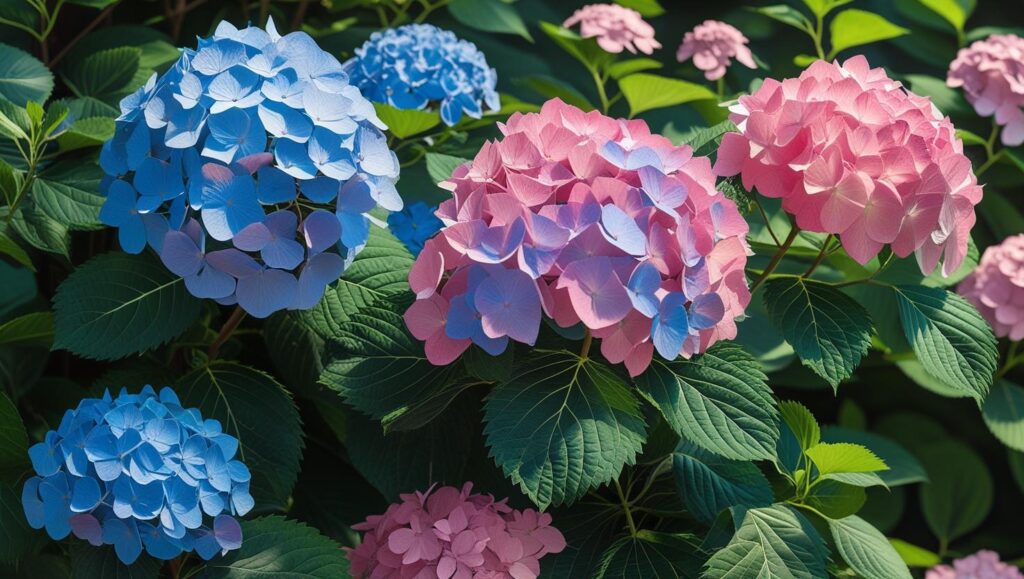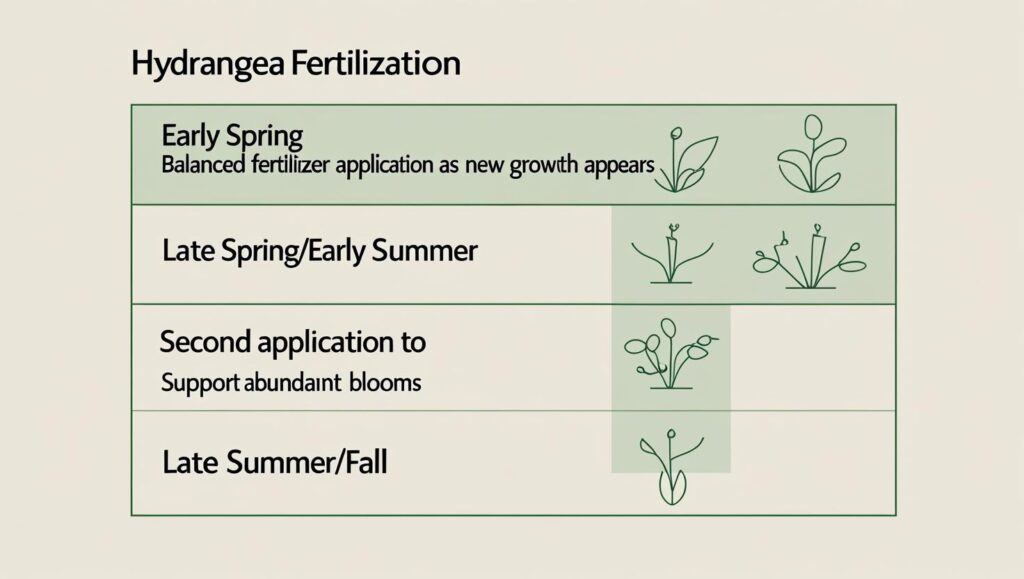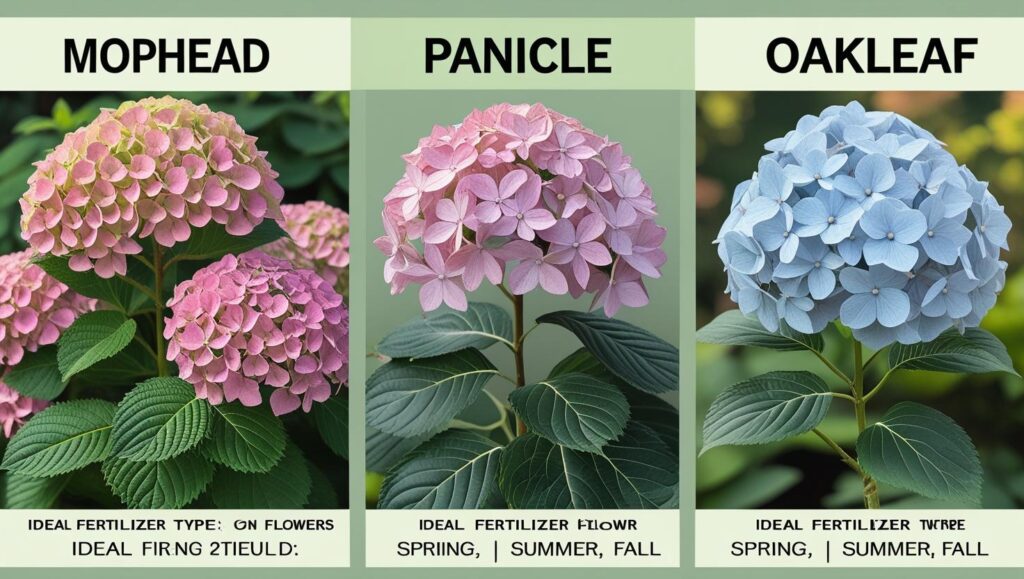For gardeners seeking vibrant, show-stopping blooms, understanding when to fertilize hydrangeas is as crucial as watering and sunlight. Horticultural experts advise that a strategic feeding schedule, tailored to the specific hydrangea type and local climate, is the key to promoting lush foliage and prolific flowers. Applying fertilizer at the right time provides essential nutrients for growth and bloom production, while ill-timed applications can hinder flowering or harm the plant.

The Foundation of Fertilization: Timing and Type
Successful hydrangea cultivation hinges on a disciplined approach to feeding. Most experts agree that over-fertilizing can be more detrimental than under-fertilizing. Too much nitrogen, for instance, can lead to abundant, green leaves but very few flowers.
“It is not always necessary to fertilize; most hydrangeas bloom better if a little starved,” advises the Oregon State University Extension Service. They recommend using a balanced, time-released fertilizer a few times a year, primarily in the spring and early fall.
The ideal time to begin fertilizing is in the spring as new growth emerges. Subsequent light applications can follow through early summer to support the plant as it develops buds and flowers. However, experts universally caution against feeding hydrangeas late in the growing season.
“You should never fertilize plants late in the growing season because you want them to go to sleep naturally,” explains Betty Montgomery, author of “Hydrangeas: How to Grow, Cultivate & Enjoy,” in an interview with Garden Design magazine. “Late fertilization might produce new growth, and this new fall growth is tender” and susceptible to damage from frost. As a general rule, most fertilization should cease by late July or early August in most climates.
Fertilizer Choices for Healthy Hydrangeas
When selecting a product, gardeners have several effective options. A balanced, slow-release fertilizer is a popular and safe choice.
- Balanced Fertilizers: Products with an N-P-K (Nitrogen-Phosphorus-Potassium) ratio like 10-10-10 provide an even distribution of core nutrients for overall plant health.
- Bloom-Boosting Formulas: Fertilizers formulated for roses or other flowering shrubs, often with a higher phosphorus number (the “P” in N-P-K), can encourage more significant and numerous blooms. However, this comes with a caveat for certain varieties.
- Organic Matter: Amending the soil with well-rotted compost or manure provides a slow, gentle release of nutrients and improves soil structure.
“A general-purpose fertilizer, such as 8-8-8 or 10-10-10 applied at a rate of 1 pound (2 cups) per 100 square feet in March, May and July is suggested,” according to the University of Georgia (UGA) Cooperative Extension. They stress the importance of watering soon after application to help dissolve the fertilizer and move it into the soil.

Tailoring Your Approach: Fertilizing Different Hydrangea Types
Not all hydrangeas share the same needs. Identifying the type of hydrangea in your garden is critical for both pruning and proper fertilization.
Bigleaf and Mountain Hydrangeas (Hydrangea macrophylla and H. serrata)
These popular varieties, known for their classic mophead and delicate lacecap flowers, are unique in their ability to change color based on soil pH. For these types, the choice of fertilizer is intrinsically linked to the desired flower color.
- For Blue Flowers: The soil must be acidic (pH below 6.0) and contain aluminum. “Use a fertilizer low in phosphorous (the middle number in the content analysis) such as 12‐4‐8 to encourage production of blue flowers,” notes the UMass Extension. High phosphorus levels can bind with aluminum in the soil, making it unavailable to the plant.
- For Pink Flowers: An alkaline soil (pH above 6.5) is needed. A fertilizer with higher phosphorus content can help maintain pink shades.
Panicle and Smooth Hydrangeas (H. paniculata and H. arborescens)
Varieties like ‘Limelight’ (panicle) and ‘Annabelle’ (smooth) are generally more robust and less sensitive to soil pH regarding their color, which is typically white or cream and may age to pink or green. A single application of a balanced, all-purpose granular fertilizer in early spring is often sufficient for the entire season.
Oakleaf Hydrangeas (H. quercifolia)
Native to the southeastern United States, these hydrangeas are also relatively low maintenance. Like panicle and smooth varieties, they benefit from a single spring application of a balanced fertilizer.

The Dangers of Over-Fertilization
More is not better when it comes to feeding hydrangeas. Excessive fertilizer can lead to “fertilizer burn,” a condition where the salts in the fertilizer draw moisture out of the plant’s roots, causing damage.
Signs of over-fertilization include:
- Scorched or browning leaf edges.
- An abundance of lush, deep green foliage with few to no flowers.
- Sudden wilting of the entire plant.
If over-fertilization is suspected, experts recommend flushing the soil thoroughly with water to help wash out the excess salts. It is also wise to skip the next scheduled feeding.
Ultimately, the best approach is a conservative one. Starting with well-amended soil rich in organic matter can reduce the need for supplemental fertilizers. When you do fertilize, follow the product’s instructions carefully and observe your plant’s response. This measured strategy will reward you with healthy plants and the beautiful, abundant blooms that make hydrangeas a garden favorite.
8 Fast-Growing Ground Covers That Fill and Keep Your Garden Looking Gorgeous
